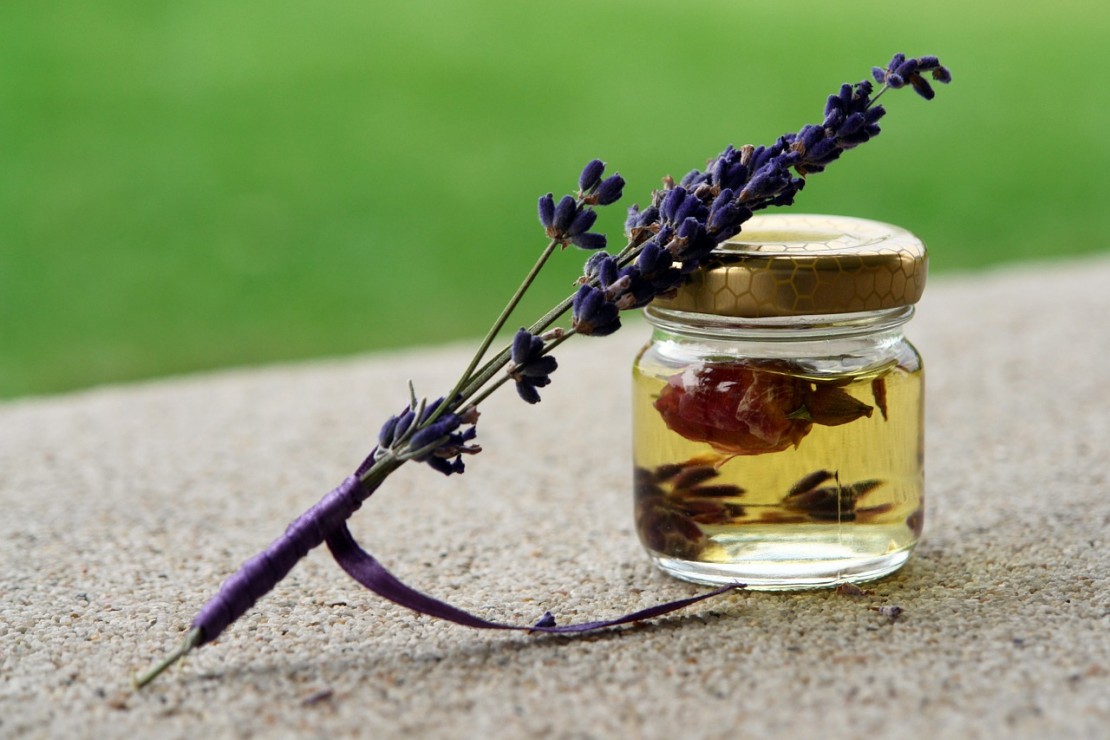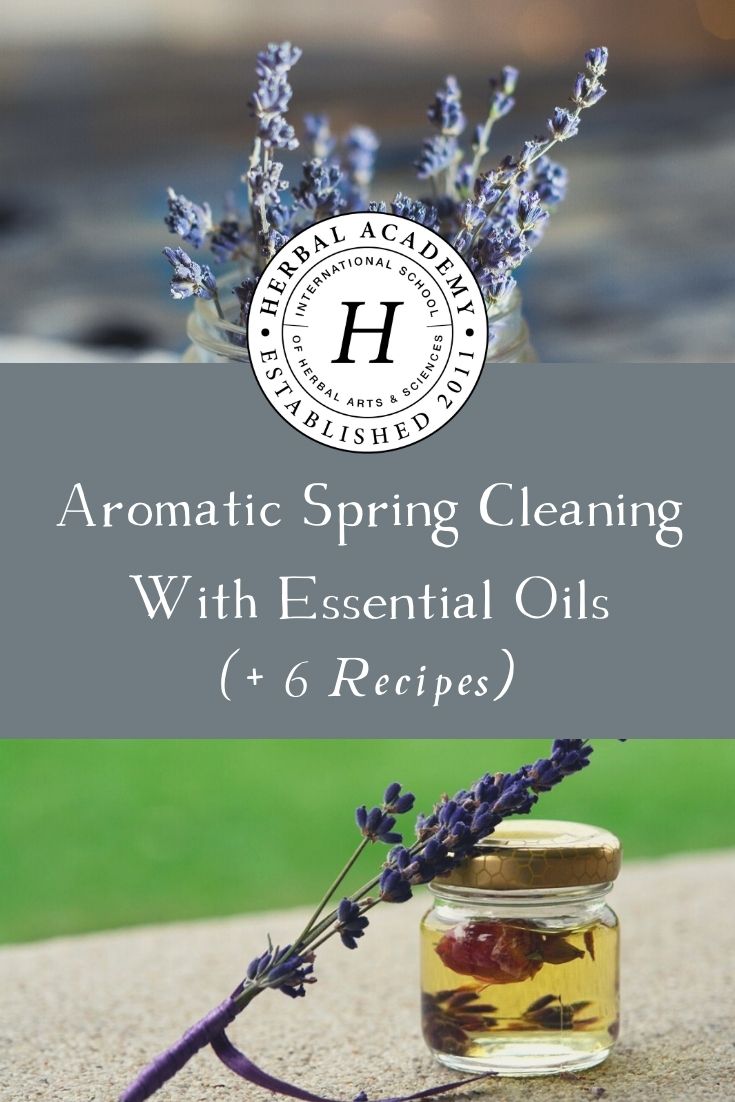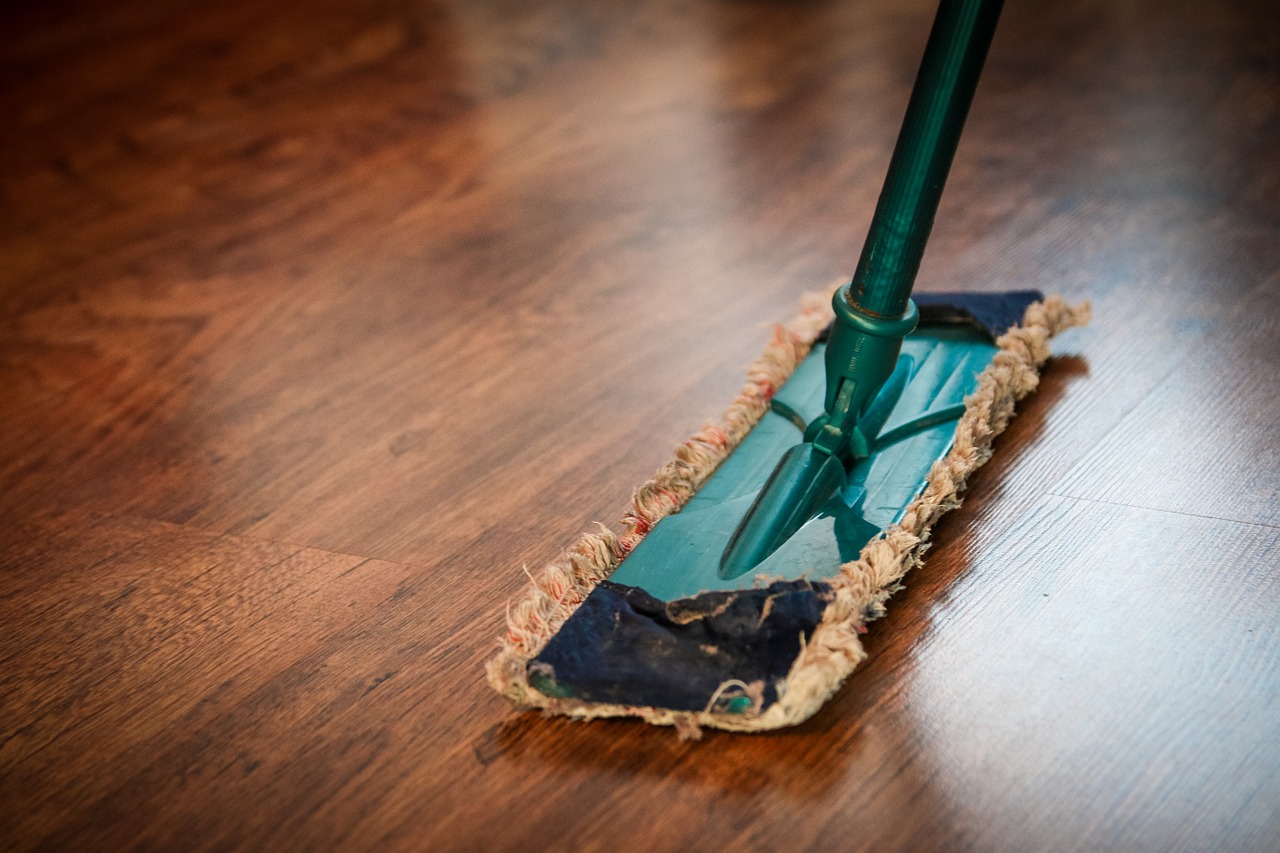
Aromatic Spring Cleaning With Essential Oils (+ 6 Recipes!)
Spring. New. Revival. Resurrection. Growth. Birth. We associate such words and concepts with the vernal season as we emerge from winter. We also often think of another word, which may not make us smile like the previous words do: spring cleaning. One better way to spring clean is spring cleaning with essential oils.
What if we could make spring cleaning less onerous by using products that support our health and uplift our emotions while we wipe, scrub, mop, and wash? Perhaps spring cleaning with essential oils?
Although essential oils will not suddenly make cleaning a joy for everyone, they offer some great side benefits to accompany the process.
Green Cleaning
The insides of our homes are highly polluted from the off-gassing of various toxic substances from furniture, carpets, flooring, as well as the toxins we bring in on a daily basis on our shoes and clothing.
When we clean, we often use caustic cleaners that require us to hold our breath, open a window, and wear gloves to protect ourselves. People who use these cleaners on a daily basis have been known to develop respiratory diseases such as asthma and bronchitis (Medina-Ramon et al., 2005). These cleaners are not only noxious for us but deadly to our environment as well (Environmental Protection Agency, 2016).
When you use essential oils in your cleaning supplies, you are able to replace these toxicants in your home.
Aromatic Spring Cleaning With Essential Oils
There has been a tremendous amount of in vitro research done on essential oils, and even more often, their individual constituents, to determine their antimicrobial potential. Many, if not most, essential oils contain constituents that inhibit or kill germs (Hammer et al., 1999), making them perfect ingredients for our cleaning solutions.
The phenols are a chemical family that is strongly antimicrobial (Nostro et al., 2007), and the oils that are high in phenols can be included in cleaning blends in very small amounts. This is especially important since they also tend to be derma caustic. A few of these oils include clove (Eugenia caryophyllata), oregano (Origanum vulgare), and thyme ct. thymol (Thymus vulgaris ct. thymol).
Another strongly antimicrobial constituent is cinnamaldehyde, found in cinnamon (Cinnamomum zeylanicum syn. Cinnamomum verum) (Ooi et al., 2006).
However, there are essential oils that smell nicer and are gentler on our skin while still being highly effective against those bacteria, viruses, and fungi with which we are most concerned when we clean our houses. Many of these oils are high in d-limonene, a monoterpene, and monoterpenols like linalool and terpinen-4-ol. 1,8 cineole, which is an oxide, has cleaning potential as well. These constituents can be found in essential oils such as the citruses, lavender (Lavandula angustifolia), tea tree (Melaleuca alternifolia), eucalyptus (Eucalyptus spp.), cardamom (Elletaria cardamomum), and rosemary (Rosmarinus officialis ct. 1,8 cineole) (Soković et al., 2010). This list is by no means exclusive.
Another reason why spring cleaning with essential oils is a perfect choice part of your cleaning regimen is their ability to support us both physically and emotionally.
- During the winter when you are fighting respiratory attacks, you might choose Eucalyptus or Douglas fir (Pseudotsuga menziesii) for some of your cleaning blends.
- If you wish to have a burst of winter sunshine appear in your bathroom as you clean the toilet, you might choose a citrus oil.
- If you are feeling tired, you might use an essential oil from the mint family, such as rosemary (Rosmarinus officinalis ct. 1,8 cineole) or peppermint (Mentha x piperita).
- And if you are feeling down, worried, or stressed, you might include the calming influence of lavender (Lavandula angustifolia).
As you clean and inhale the aromas of your cleaning solutions, instead of feeling your lungs burn, you may feel your head clear, your emotions come into balance, and your day becomes a little brighter. At the very least it will smell a whole lot better than the alternative!
Cleaning The Kitchen & Bathroom
Citrus oils are famous for their ability to “de-gunk.” You will find commercial cleaners with orange oil as a primary ingredient because of this ability. For a broad range of cleaning purposes, lemon (Citrus limon) is an excellent go-to ingredient.
If you have a spot of something sticky, or you wish to remove the glue left behind by a sticky label, a drop of lemon oil placed directly on the spot and allowed to sit for a moment before scrubbing the area is often effective. If there is more sticky residue, try the following scrub recipe:
1 tablespoon vegetable oil (e.g., olive oil, coconut oil – if solid coconut oil, melt gently before mixing)Sticky Residue Scrub
1 tablespoon baking soda
5 drops lemon (Citrus limon) EO
5 drops grapefruit (Citrus paradisi) EO
Keep your dishcloths from smelling musty with a simple citrus spray.
2-ounce glass spray bottleDish Cloth Deodorizer
1.5 ounces distilled water
1 teaspoon white vinegar
1/2 teaspoon liquid Castile soap
10 drops lemon (Citrus limon) EO
10 drops sweet orange (Citrus sinensis) EO
8-ounce glass spray bottleGeneral All-Purpose Cleaning Spray
6 ounces distilled water
1 oucnes white vinegar
20 drops tea tree (Melaleuca alternifolia) EO
20 drops lavender (Lavandula angustifolia) EO
15 drops Siberian fir (Abies sibirica) EO
3 drops thyme (Thymus vulgaris ct. Thymol) EO
Cleaning The Living Room
For regular carpet cleaning, it is simple to make up a carpet deodorizing powder to sprinkle on the carpet before vacuuming.
1 cup baking soda To use:
Sprinkle lightly over the carpet and wait 10-15 minutes before vacuuming.
Carpet Powder
20 drops selected from the following oils: sweet orange (Citrus sinensis), lemon (Citrus limon), lemongrass (Cymbopogon citratus), patchouli (Pogostemon cablin), and cypress (Cupressus sempervirens). Other oils are possible as well.
Use hydrolats to freshen up your living room with a quick spritz over your upholstery. Be sure to check for colorfastness in a small, inconspicuous area, and only spritz on upholstery that can tolerate being misted with water.
2 oz. of one (or a blend) of the following hydrolats:Upholstery Freshening Spray
Sweet grass (Hierochloe odorata ) hydrolat
Lavender (Lavandula angustifolia) hydrolat
Lime (Citrus latifolia) hydrolat
Douglas fir (Pseudotsuga menziesii) hydrolat
Keeping The Bugs Away
Adapted from Essential Living: Aromatherapy Recipes for Health and Home by Andrea Butje
8-ounce glass spray bottleAnt and Spider Repellant
7.5 ounces distilled water
1/2 teaspoon liquid castile soap
45 drops peppermint (Mentha x piperita) EO
25 drops eucalyptus (Eucalyptus citriodora) EO
Do I Use Expensive Essential Oils For Spring Cleaning?
Although it stands to reason that the highest quality essential oil will have the most germ-fighting power, you do not always need to use your expensive, therapeutic essential oils for scrubbing your toilet. Even if you do, you often only need a few drops, which means one bottle will last you a long time. For example, it doesn’t feel as wasteful to put 1 drop of lemon EO in your toilet bowl to freshen the bathroom a bit before company comes over.
If you read the instructions on commercial cleaners carefully, you will often read that the cleaner needs to sit on the surface for 10 minutes or more in order to have an antimicrobial effect. This is also true of essential oils, and each oil requires a different amount of effective contact time. Since we usually spray and wipe immediately, we are actually not using the antimicrobial effect of most of our cleaners to their greatest potential. This means that some of the less expensive essential oils (if they are still pure and authentic) will do just as well.
Additionally, as many essential oils age, especially citrus oils, they oxidize, making them dermal irritants. They will still have some antimicrobial benefit, but will no longer be useful for therapeutic purposes. Many of the online essential oil retailers will also have less expensive “cleaning oils” available. These are oils that are either nearing or have passed the end of their therapeutic shelf-lives, and they are an excellent, healthful option.
The possibilities for spring cleaning with essential oils are endless, with a long list of useful antimicrobial essential oils and hydrolats as well as other natural cleaning products you probably already have in your laundry room or kitchen like baking soda, borax, washing soda, and Castile soap. Check out the books listed in the recommended resources for many more recipes.
Points To Remember When Spring Cleaning with Essential Oils
- Always shake essential oil cleaning blends well before using.
- It is still wise to wear gloves while cleaning with those essential oils blends that will come into contact with your hands, such as scrubs. Extended contact with the essential oils and vinegar may be irritating to the skin, and some essential oils are phototoxic. This means that if you get too much of the essential oil on your skin, you need to keep that skin covered and out of the sun for 12-24 hours after application. This is not a concern if you wear gloves.
- Do not use cleaning sprays on people or pets.
- It is still a good practice to test for colorfastness if using an essential oil spray on furniture or carpets.
- Do not use tea tree (Melaleuca alternifolia) essential oil in blends you will use on carpets or floors in a household with cats or small dogs. This is being extra cautious, but worthwhile. Be cautious with any types of cleaning sprays in households with birds.
- Make cleaning blends fresh every couple of weeks. Water-based solutions are more prone to bacterial and fungal growth.
- Although glass containers are recommended, these cleaning solutions can also be mixed and kept in PET plastic bottles and containers.
GREEN CLEANING RESOURCES:
Andrea Butje, Essential living: Aromatherapy Recipes for Health and Home
Karyn Siegel-Maier, The Naturally Clean Home
Valerie Ann Worwood, The Complete Book of Essential Oils and Aromatherapy

REFERENCES
Butje, A. (2012). Essential living: Aromatherapy recipes for health and home. CreateSpace Independent Publishing Platform.
Environmental Protection Agency. (February 1, 2016). Why buy greener products? Retrieved from https://www.epa.gov/greenerproducts/why-buy-greener-products
Hammer, K.A., Carson, C.F., & Riley, T.V. (1999). Antimicrobial activity of essential oils and other plant extracts. Journal of Applied Microbiology, 86(6), 985-990.
Medina-Ramon, M., Zock, J. P.,Kogevinas, M., Sunyer, J., Torralba, Y., Borrell, A., … Anto, J. M. (2005). Asthma, chronic bronchitis, and exposure to irritant agents in occupational domestic cleaning: a nested case-control study. Occupational Environmental Medicine, 62, 598-606. doi: 10.1136/oem.2004.017640
Nostro., A., Roccaro, A. S., Bisignano, G., Marino, A., Cannatelli, M. A., Pizzimenti, F.C., … Blanco, A. R. (2007). Effects of oregano, carvacrol and thymol on Staphylococcus aureus and Staphylococcus epidermidis biofilms. Journal of Medical Microbiology, 56, 519–523. doi:10.1099/jmm.0.46804-0
Ooi, L. S., Li ,Y., Kam, S. L., Wang, H., Wong, E. Y., & Ooi, V. E. (2006). Antimicrobial activities of cinnamon oil and cinnamaldehyde from the Chinese medicinal herb Cinnamomum cassia Blume. American Journal of Chinese Medicine, 34(3), 511-522.
Rhoades, J., Gialagkolidou, K, Gogou, M., Mavridou, O., Blatsiotis, N., Ritzoulis, C., & Likotrafiti, E. (2013). Oregano essential oil as an antimicrobial additive to detergent for hand washing and food contact surface cleaning. Journal of Applied Microbiology, 115(4), 987-994. doi:10.1111/jam.12302
Soković, M., Glamočlija, J., Marin P. D., Brkić, D., & van Griensven, L. J. L. D. (2010). Antibacterial effects of the essential oils of commonly consumed medicinal herbs using an in vitro model. Molecules, 15, 7532-7546. doi:10.3390/molecules15117532










